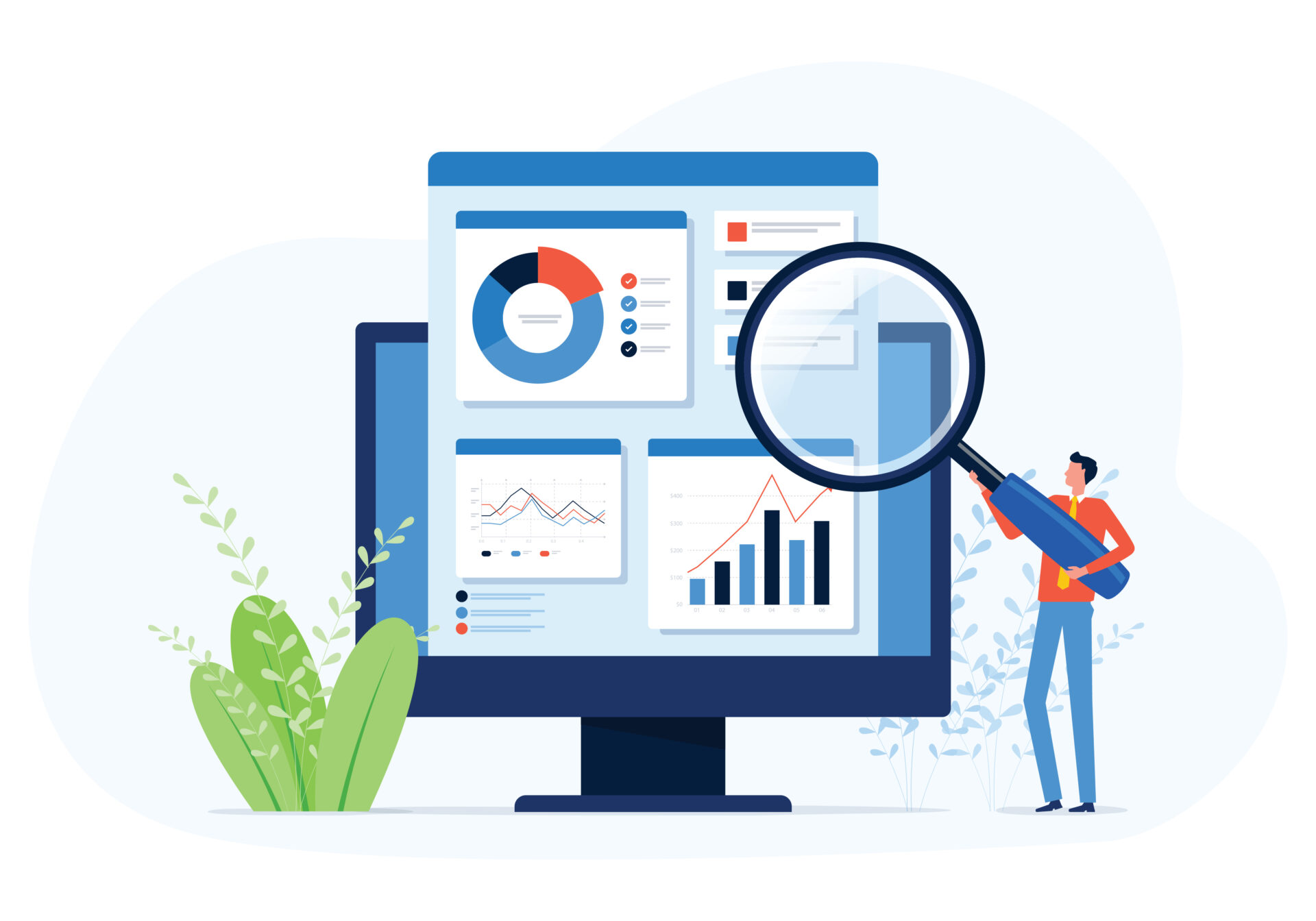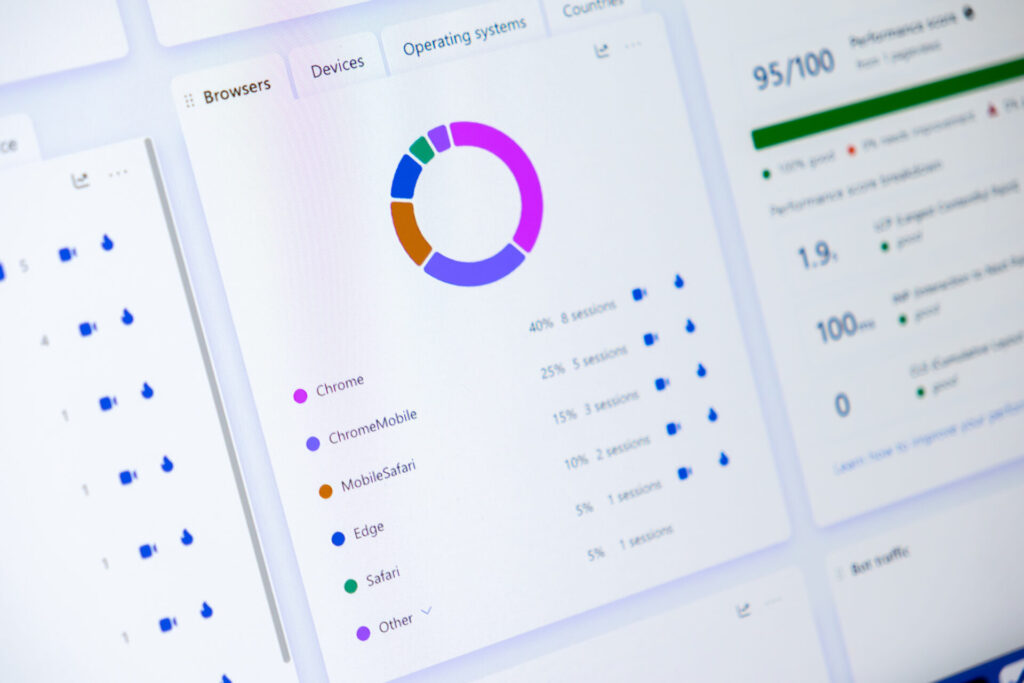
Google Analytics 4 replaces familiar metrics like bounce rate and pageviews with a flexible, event-based model that offers deeper insights into user behavior. Views track page and screen loads across devices, sessions reveal visit frequency and duration, and engaged sessions highlight meaningful interactions. Events capture every click, scroll, and form submission, while key events (formerly conversions) focus on actions that drive business goals. Engagement rate provides a clearer alternative to bounce rate, and traffic sources and channels show where users come from. By combining these metrics, businesses can see not only how many visitors they attract but also how effectively their site drives results, helping marketing teams refine strategies with confidence.
If you’ve logged into Google Analytics and felt like you’ve entered a jungle of new terms and metrics, you’re not alone. GA4, Google’s latest iteration of its web analytics platform, flipped the script on how businesses measure site activity and user engagement. Gone are the familiar Universal Analytics categories like bounce rate and pageviews. In their place: a more flexible, event-based model.
The good news? Once you learn the vocabulary, GA4’s metrics can offer richer, more actionable insights into how users behave on your site. Below, we break down what some of the most common GA4 metrics actually mean, and what they can tell you about your marketing performance.
Views (Now “Views,” Not “Pageviews”)
In GA4, “views” refer to the number of times a page or screen was loaded or reloaded. This might sound identical to the old “pageviews,” but the underlying tracking model has changed.
For instance, GA4 tracks views for both websites and mobile apps, unifying the data across platforms. So if someone loads your homepage twice during one visit, once on their phone, then again on a tablet, that’s two views.
What it tells you: Views are useful for gauging the popularity of specific pages or content. However, on their own, they don’t say much about how people are engaging with that content—just that they’re seeing it.
Sessions
A session is a group of user interactions (views, events, conversions) that take place within a specific time frame. Unlike in Universal Analytics, GA4 does not automatically reset sessions at midnight or when a campaign source changes. Sessions in GA4 are more user-centric and based purely on activity, not arbitrary timeouts.
What it tells you: The sessions metric helps businesses understand how often people are coming to the site and how long they’re sticking around. A higher session count usually indicates strong interest or traffic volume. But volume alone doesn’t equal quality. You’ll want to dig deeper into what users are doing during each session.
Engaged Sessions
GA4 defines an “engaged session” as one that lasts 10 seconds or longer, includes at least one conversion event, or has two or more pageviews or screenviews.
This helps filter out fleeting visits (like someone who clicked a link and immediately bounced) and instead focuses on users who are actually spending time or completing actions on your site.
What it tells you: Engaged sessions reveal how much of your traffic is high quality. If you’re running a campaign that draws a lot of sessions but few engaged sessions, you may have a targeting or messaging problem.
Events
Every interaction in GA4 is an event. That means pageviews, clicks, downloads, scrolls, form submissions and others are all recorded as an events.
This new model gives you much more granular insight into user behavior, but it also requires a little more setup. You’ll need to define what specific events you care about and configure them accordingly.
What it tells you: Events are where GA4 shines. With the right tagging, you can answer questions like: Are users clicking on our “Get a Quote” button? Are they playing videos? Downloading resources? The better your event configuration, the better your insight.
Key Events (Formerly “Conversions”)
In GA4, not all events are created equal. “Key events” are a subset of events that you manually mark as the most important for your business. These might include form submissions, purchases, button clicks, or any other interaction that signals meaningful progress toward your goals.
What it tells you: Tracking key events is critical for evaluating whether your website is actually supporting your business objectives. And since you define them yourself, they’re highly customizable.

Traffic Engagement Metrics
Engagement Rate
Engagement rate is the percentage of sessions that qualify as “engaged.” So if you had 100 sessions and 60 of them lasted longer than 10 seconds or included meaningful activity, your engagement rate would be 60%.
What it tells you: This is the GA4 alternative to “bounce rate,” but is more useful. Rather than penalizing single-page visits (which might be perfectly valid), engagement rate focuses on whether the visit was meaningful.
Conversion Events
A “conversion event” is any key event you’ve identified as critical to your goals. These are tracked individually, and you can assign monetary values to them if you like.
What it tells you: The number of conversion events tells you whether your site is doing its job. Are users filling out forms? Are they scheduling appointments or downloading key content? You can track these by page, campaign source, or user type to see where you’re succeeding and where you’re not.
Channels
“Channels” group your traffic by marketing strategy, such as:
- Organic Search
- Paid Search
- Direct
- Referral
- Social
You can also create custom channels to reflect your specific initiatives (like “Affiliate Partners” or “LinkedIn Ads”).
What it tells you: Channel data shows you where your users are coming from, at a high level. It’s especially useful for comparing the effectiveness of broad strategies and allocating budget accordingly.
Sources
The “source” is the specific origin of your traffic, such as Google, Bing, facebook.com, or a particular email campaign. In GA4, you’ll often see source/medium paired together for clarity (e.g., google/organic or mailchimp/email).
What it tells you: Source-level tracking helps identify which platforms, partners, or campaigns are truly driving value. You can use this data to refine targeting and messaging, or to double down on high-performing sources.
What Sessions Can Tell You
The “sessions” metric provides a window into how your website fits into the user journey. A spike in sessions might indicate a successful campaign or growing interest in your brand. But declining session counts could mean your site is losing visibility or relevance.
Looking at sessions over time can also help you understand seasonality, content fatigue, or the long-term impact of SEO efforts.
Pro tip: When used in tandem with engagement rate and key event tracking, sessions can help you identify not just how many people are coming to your site, but whether they’re finding what they need once they arrive.
Don’t Let the Data Intimidate You
GA4 has a learning curve, but it also gives you more flexibility than ever to tailor your reporting to your actual business needs. The key is defining what success looks like—and then building your event structure and reports around that definition.
Still feeling a little lost in the metrics jungle? When you partner with M&R Marketing, we provide you with regular website performance reports, giving you both your GA4 data and a detailed analysis of what those numbers mean for your business and your marketing.
Want to Make Better, Data-Driven Marketing Decisions? Talk to the pros at M&R Marketing: 478-621-4491
Since 2008, M&R has helped our clients break down the flood of data from their website’s analytics and use that data to make intentional, results-driven decisions for their business growth!
Reach out to one of our business development managers today!
Detailed Marketing Deets
Want some profound insight into all things marketing? Check out our Definitive Guide Series for detailed information, tips, and advice regarding:

